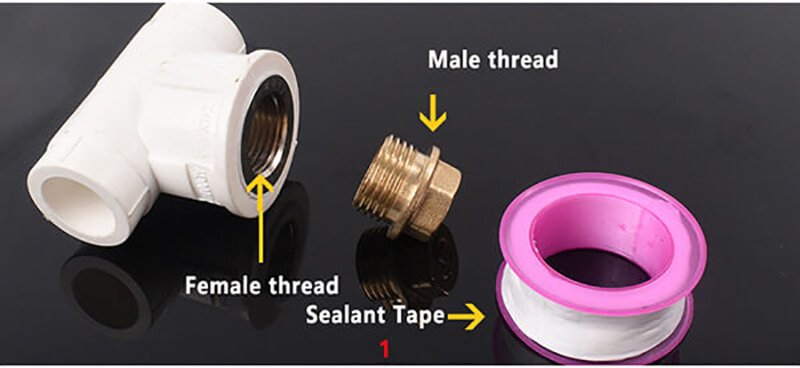When it comes to plumbing systems, connecting different types of pipes is a common challenge. Among the various pipe materials available, plastic and copper are two of the most commonly used. While they each have their own distinct advantages, they often need to be joined together in projects such as garden hose connections, irrigation systems, and home plumbing setups.
Joining plastic and copper pipes might seem complicated due to the difference in their properties—plastic is flexible and lightweight, while copper is rigid and durable. However, with the right methods and tools, this task can be done easily and efficiently. In this article, we’ll explore how to connect plastic and copper pipes properly, ensuring that your plumbing system works seamlessly and reliably.
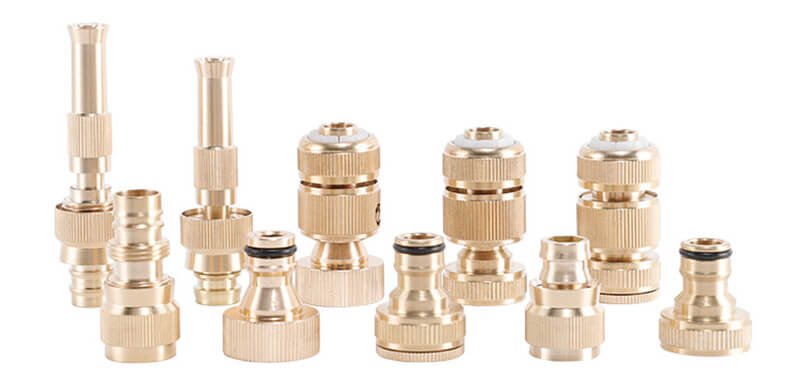
Types of Plastic and Copper Pipes
Plastic Pipes
Plastic pipes have gained popularity due to their affordability, ease of installation, and resistance to corrosion. The most common types of plastic pipes are:
- PVC (Polyvinyl Chloride): This is a widely used plastic pipe in plumbing due to its durability and low cost. PVC is ideal for cold water and irrigation systems, but it cannot handle high temperatures.
- PEX (Cross-Linked Polyethylene): Known for its flexibility and resistance to scale, chlorine, and freezing, PEX is often used in residential plumbing, especially for water distribution.
- CPVC (Chlorinated Polyvinyl Chloride): CPVC pipes are similar to PVC but are chlorinated, allowing them to handle hotter water temperatures. This makes them suitable for both hot and cold water applications.
Advantages of Plastic Pipes:
- Cost-effective: Typically cheaper than metal pipes.
- Corrosion-resistant: Plastic does not rust or corrode like metal pipes.
- Lightweight: Easier to handle and install.
Copper Pipes
Copper pipes are known for their strength and long lifespan. They are commonly used for both water supply and heating systems. The two main types of copper pipes are:
- Type L: This is the most commonly used type for residential plumbing due to its strength and durability. Type L copper pipes are ideal for both cold and hot water systems.
- Type M: Type M pipes are thinner and less durable than Type L pipes. They are typically used for low-pressure applications such as in certain HVAC systems or smaller residential projects.
Advantages of Copper Pipes:
- Durability: Copper pipes have a long lifespan and are resistant to wear and tear.
- Heat resistance: Copper is ideal for hot water systems as it can handle high temperatures.
- Mold and bacteria resistant: Copper’s natural properties help to prevent microbial growth.

Why Joining Plastic and Copper Pipes is Necessary
In plumbing projects, plastic and copper pipes are often used together because they each offer unique benefits that complement each other. Here are a few reasons why combining these materials is necessary:
Cost-Effective Solution
Plastic pipes are generally more affordable than copper, making them a good choice for long stretches of pipe, such as in irrigation or outdoor plumbing. However, copper pipes are preferred for areas where strength and durability are needed, such as connections to water heaters. By joining the two, you can benefit from the cost-effectiveness of plastic and the long-lasting strength of copper.
Flexibility and Strength
Plastic pipes are incredibly flexible, which makes them easier to install around obstacles and in tight spaces. However, copper pipes provide the necessary rigidity and strength to handle high pressure and temperature, such as in water distribution systems. By combining both materials, you can take advantage of their respective strengths.
Long-Term Durability
While plastic pipes are great for many applications, they can sometimes wear out or become brittle over time. Copper pipes, on the other hand, are known for their durability and resistance to environmental factors like UV rays. By using both materials, you ensure that your system benefits from both short-term flexibility and long-term durability.
Methods for Joining Plastic and Copper Pipes
When it comes to connecting plastic and copper pipes, there are several methods to consider. Each method has its own advantages depending on the specific needs of your plumbing project. Below, we’ll explore the most common methods used for joining plastic and copper pipes.
Compression Fittings
Compression fittings are one of the most popular and reliable ways to join plastic and copper pipes. These fittings use a compression nut and ring to create a tight, leak-free seal between the two materials.
How Compression Fittings Work
- Prepare the Pipes: Cut the copper and plastic pipes to the desired length and remove any burrs or rough edges.
- Insert the Compression Fitting: Slide the compression nut and ring onto the copper pipe, followed by the plastic pipe.
- Tighten the Nut: Tighten the compression nut by hand, then use a wrench to secure it further. The compression ring will compress against both the copper and plastic pipes, creating a secure connection.
Advantages of Compression Fittings
- Easy to install with minimal tools required.
- Provides a strong and leak-proof connection.
- Can be disassembled and reused if needed.
Push-Fit Fittings
Push-fit fittings are another great option for joining plastic and copper pipes. These fittings are designed for quick, tool-free installation, making them ideal for DIY projects or when speed is important.
How Push-Fit Fittings Work
- Prepare the Pipes: Cut the pipes to the correct length and ensure the ends are smooth and free of debris.
- Insert the Fitting: Simply push the end of each pipe into the push-fit fitting. The internal mechanism grips both the copper and plastic pipes securely.
- Check for Leaks: Once the pipes are inserted, double-check for any signs of leaks before fully completing the installation.
Advantages of Push-Fit Fittings
- Quick and easy installation without the need for tools.
- No need for specialized skills.
- Can be used with both copper and plastic pipes.
Threaded Fittings (With Adapters)
In some cases, you may need to use threaded fittings to connect copper and plastic pipes. This method involves using adapters that allow the threaded copper pipe to connect to the smooth plastic pipe.
How Threaded Fittings Work
- Prepare the Pipes: Cut the copper pipe to the desired length and thread the end using a pipe threading tool.
- Install an Adapter: Attach a threaded adapter to the copper pipe. These adapters allow you to connect a threaded copper pipe to a plastic pipe with a push-fit or slip fitting.
- Secure the Connection: Tighten the connection with a wrench to ensure it is leak-proof.
Advantages of Threaded Fittings
- Provides a secure and permanent connection.
- Works well when connecting pipes in high-pressure systems.
- Can be used with a variety of materials, including both copper and plastic.
Soldering Copper to Plastic (Using Adapters)
While soldering copper to plastic isn’t typically recommended, it is possible when you use the correct adapter and technique. This method involves soldering the copper pipe to a fitting that can then be connected to plastic.
How Soldering Works
- Prepare the Pipes and Fittings: Clean the ends of both the copper pipe and the fitting to remove any dirt or oxidation.
- Apply Soldering Flux: Coat the copper pipe and fitting with soldering flux to ensure a strong bond.
- Heat and Apply Solder: Use a torch to heat the copper pipe and fitting, and then apply solder to the joint until it melts and forms a strong seal.
- Connect to Plastic: Once the soldering is done, connect the fitting to the plastic pipe using a push-fit or threaded connector.
Advantages of Soldering
- Provides a permanent, leak-proof bond for copper connections.
- Ideal for high-temperature or high-pressure applications.
Choosing the Right Method for Your Project
Each method of joining plastic and copper pipes has its strengths and ideal use cases. For quick and easy installations, push-fit fittings or compression fittings are great choices. For more permanent, high-pressure connections, threaded fittings or soldering may be more appropriate. Consider your project’s needs—whether it’s speed, cost, or durability—before deciding which method is best for you.
The method you choose will depend on your specific requirements, such as the type of pipes you’re working with, the pressure ratings, and the tools available. By selecting the right method, you can ensure a secure, durable, and leak-free connection between your plastic and copper pipes.
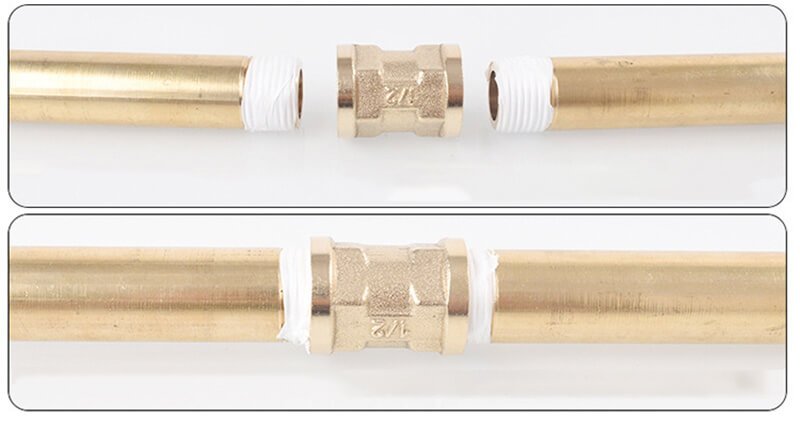
Preparation for Joining the Pipes
Before joining plastic and copper pipes, it’s important to properly prepare both materials to ensure a secure, leak-free connection. Proper preparation will not only help you avoid common issues like leaks but also extend the longevity of your plumbing system.
Tools and Materials Needed
To get started, make sure you have the right tools and materials for the job:
- Pipe Cutter: For cutting both plastic and copper pipes to the desired length.
- Deburring Tool: To remove any sharp edges or burrs after cutting the pipes.
- Compression Fittings or Push-Fit Fittings: The fittings you plan to use for joining the pipes.
- Wrench: If using compression fittings, a wrench is necessary to tighten the connection.
- Teflon Tape (optional): Used to wrap threaded connections for added sealing.
- Clean Cloth: To clean the pipe ends and fittings before assembly.
Preparing the Pipes
- Cut the Pipes to Length: Measure and cut both the plastic and copper pipes to the appropriate size. Ensure your cuts are straight and accurate.
- Deburr the Edges: After cutting, use a deburring tool to remove any rough edges or burrs on the pipe ends. This helps avoid damaging the fittings and ensures a better seal.
- Clean the Pipe Ends: Use a clean cloth to wipe the ends of the pipes, removing any dust, dirt, or debris that may prevent a proper connection.
- Inspect the Pipes: Check for any cracks, bends, or defects in the pipes that could cause problems during installation.
Properly preparing your pipes is crucial to achieving a tight and long-lasting connection. Once the pipes are prepared, you’re ready to move on to the actual joining process.
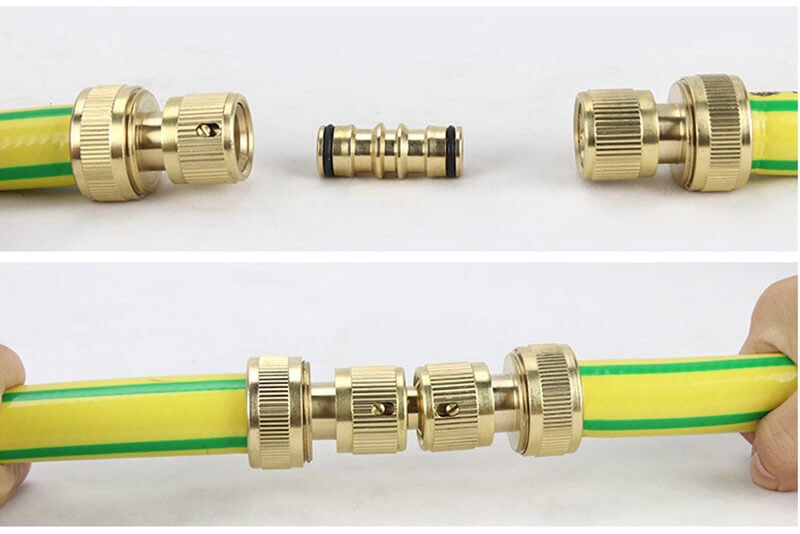
Step-by-Step Guide to Join Plastic and Copper Pipes
Now that you’ve gathered your tools and prepared your pipes, it’s time to connect them. Below is a step-by-step guide for joining plastic and copper pipes using the most common methods.
Method 1: Using Compression Fittings
Compression fittings are one of the most reliable methods for joining plastic and copper pipes. Here’s how you can use them:
- Slide the Compression Nut and Ring: First, slide the compression nut and the compression ring onto the copper pipe. Make sure they are positioned correctly, with the ring facing the pipe end.
- Insert the Plastic Pipe: Push the plastic pipe into the fitting. Ensure it’s inserted all the way into the fitting for a secure connection.
- Tighten the Nut: Slide the compression nut over the plastic pipe and screw it onto the fitting. Use a wrench to tighten the nut, securing the ring in place. This compresses the ring, creating a tight seal between the copper and plastic pipes.
- Check for Leaks: After tightening, double-check the connection for any leaks. If there are any, tighten the nut slightly more, being careful not to overtighten.
Method 2: Using Push-Fit Fittings
Push-fit fittings are an easy and quick solution. Here’s how to install them:
- Prepare the Pipes: Ensure both the copper and plastic pipes are clean and free of debris. Cut the pipes to the correct length if needed.
- Push the Pipes into the Fitting: Simply insert the ends of both the copper and plastic pipes into the push-fit fitting. The internal mechanism of the fitting will securely grip both pipes.
- Ensure the Pipes Are Fully Inserted: Make sure both pipes are pushed all the way into the fitting. You should feel resistance when the pipes are fully inserted.
- Check for Leaks: As with compression fittings, always check for leaks after installation. If there are any issues, remove the pipes from the fitting and reinsert them.
Method 3: Using Threaded Fittings (With Adapters)
For a more permanent and secure connection, use threaded fittings with adapters:
- Prepare the Copper Pipe: Using a pipe threading tool, thread the end of the copper pipe to allow it to screw into a fitting.
- Install the Adapter: Screw a threaded adapter onto the threaded copper pipe. This adapter will allow you to connect the threaded copper pipe to a plastic pipe using a push-fit or slip fitting.
- Connect the Plastic Pipe: Attach the plastic pipe to the other side of the adapter using a push-fit or compression fitting.
- Tighten the Connections: Use a wrench to tighten all connections, ensuring everything is secure and leak-free.
Method 4: Using Soldering (with Adapters)
While soldering is not commonly used to directly connect copper to plastic, it can be done with the proper adapter:
- Clean the Pipes and Fittings: Use a clean cloth to wipe down the ends of the copper pipe and the fitting. Apply soldering flux to the pipe and fitting.
- Heat the Copper Pipe: Use a torch to heat the copper pipe and fitting. Be sure to heat the area evenly to avoid damaging the pipe.
- Apply Solder: Once the copper is hot, apply solder to the joint. The solder should flow into the connection, creating a strong bond.
- Connect to Plastic: After soldering the copper, use an adapter to connect the copper pipe to the plastic pipe. Follow the steps for using a compression or push-fit fitting to join the two materials.
Final Steps: Testing and Inspection
Once all connections are made, always test your system. Turn on the water supply (or pressure) and check for leaks around the connections. If any leaks appear, tighten the fittings and recheck. Proper installation is key to ensuring a durable, leak-free connection.
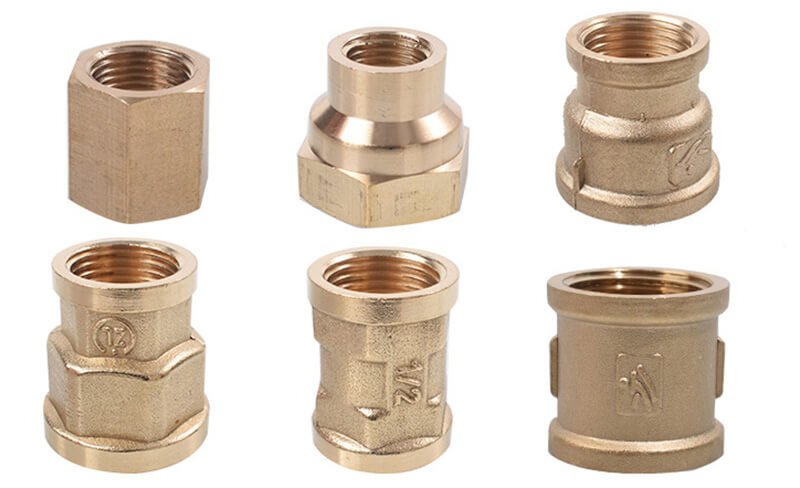
Troubleshooting Common Issues
Even with careful preparation and installation, issues can sometimes arise when joining plastic and copper pipes. Below are some common problems you may encounter, along with tips on how to resolve them.
Leaks at the Connection
One of the most common issues when joining pipes is leaks at the connection point. If you notice any leaks, here’s what you can do:
- Tighten the Fittings: If you see water dripping from the connection, the first step is to check if the fittings are tight. Use a wrench to carefully tighten compression or threaded fittings. Be careful not to overtighten, as this can damage the pipes or fittings.
- Inspect the Seal: If tightening the fitting doesn’t stop the leak, it could be due to an improperly seated seal or compression ring. In the case of compression fittings, make sure the ring is positioned correctly and that it has not become damaged.
- Check for Cracks or Damage: Inspect both the copper and plastic pipes for any visible cracks, dents, or defects that might be causing the leak. If a pipe is damaged, it will need to be replaced.
Misalignment of Pipes
Another issue that can occur is the misalignment of the pipes during installation. If the pipes are not aligned properly, it can put stress on the fittings and cause leaks over time.
- Solution: Ensure that the pipes are properly aligned before connecting them. If needed, use a pipe support to hold the pipes in place while making the connection.
Difficulty in Inserting the Pipes into Fittings
Sometimes, you may find it hard to insert the pipe into the fitting, especially with push-fit or compression fittings.
- Solution: Double-check that the pipe ends are cut cleanly and squarely. A deburring tool can help smooth out any rough edges. Also, make sure that the fitting is the correct size for the pipe.
Unstable or Weak Connection
If the connection feels weak or unstable, it could be due to incorrect installation or using the wrong type of fittings.
- Solution: Double-check that you are using the correct fitting type for your pipes. For example, ensure that threaded fittings are used only with threaded pipes and that compression fittings are properly tightened. If in doubt, consider consulting a professional.
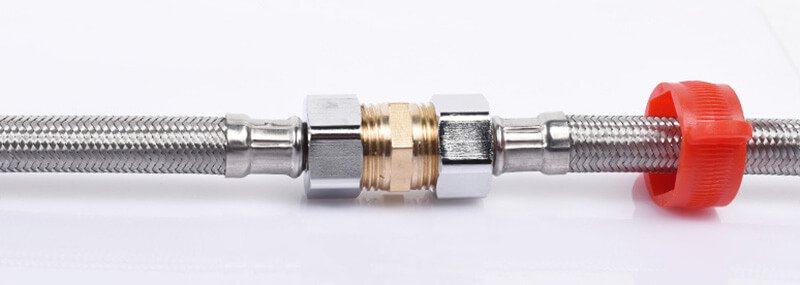
Conclusion
Joining plastic and copper pipes is a straightforward process when done correctly, but like any plumbing project, it requires attention to detail and the right tools. Whether you choose compression fittings, push-fit fittings, threaded connections, or soldering, each method has its own benefits and applications.
By following the preparation steps, carefully selecting the appropriate joining method, and troubleshooting common issues as they arise, you can ensure that your plumbing system remains durable and leak-free for years to come.

